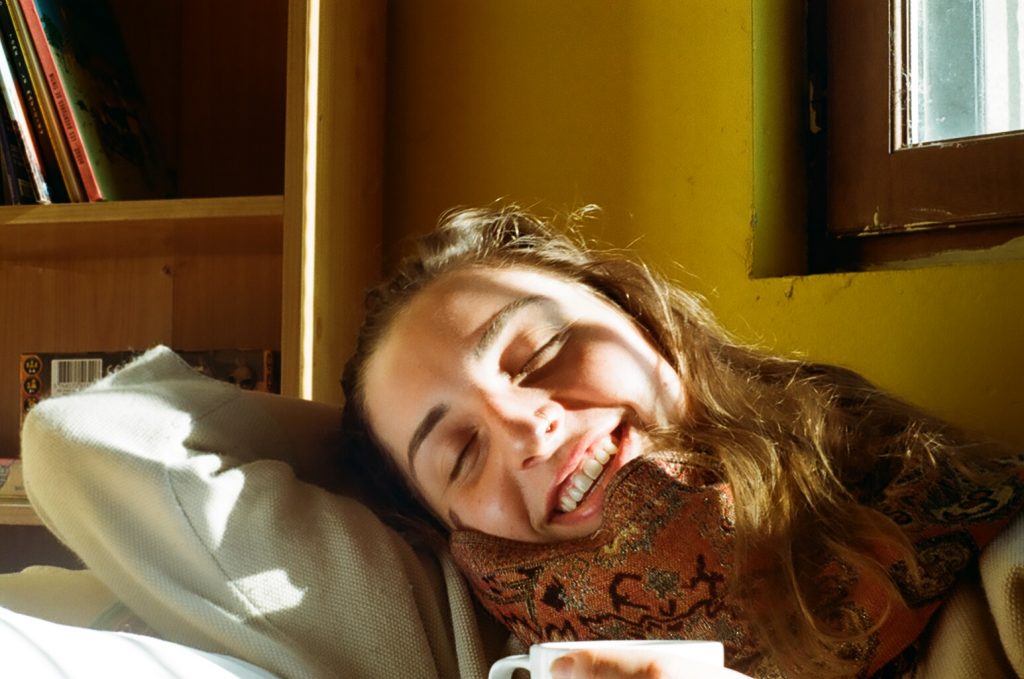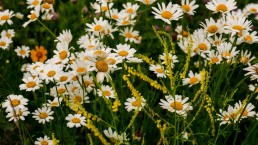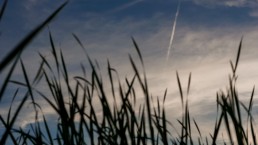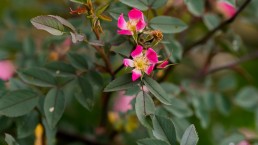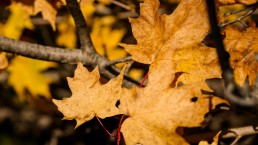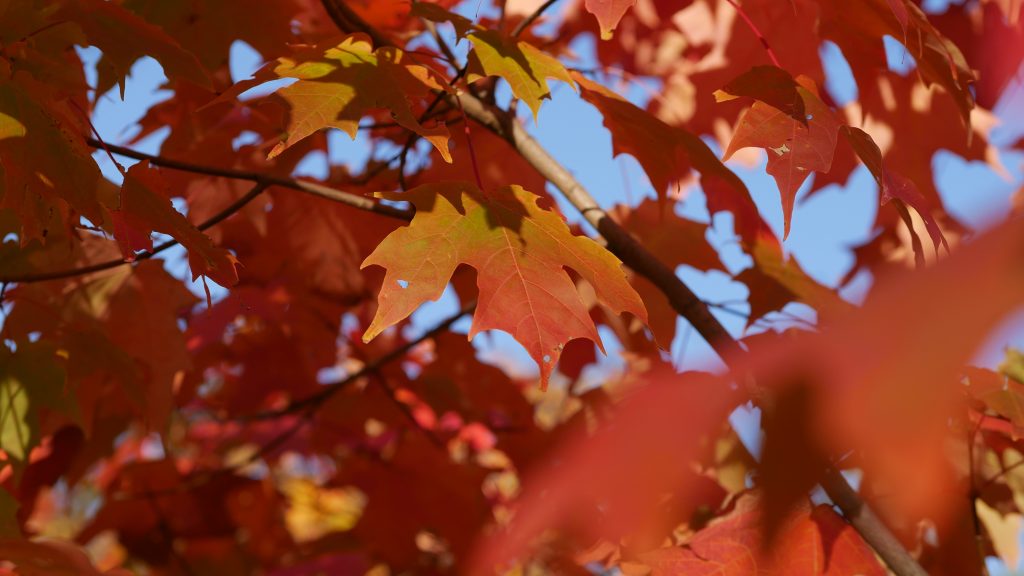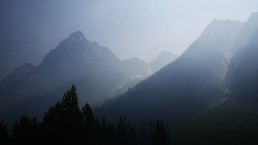Herbal Histories: Chalid Ottway, Planetary Herbalist
Consumers in the United States spent an estimated $9.602 billion on herbal dietary supplements in 2019, an 8.6% increase in total US sales from the previous year, according to the American Botanical Council’s (ABCs) 2019 Herb Market Report.
And this is expected to increase for 2020 and 2021. Yet 95% of these sales would not exist without the work and devotion to their craft of the herbalists of the recent past. Herbal medicine today truly stands on the shoulders of all those who came before.
In this blog we will look more into some of these herbalists, Starting today with one of my favourites Mr Chalid Ottway, a true descendant and student of Aviccena – one of the greatest herbalists who ever lived. (To learn more about Aviccena, see Mr Ottway’s short biography of him at the end of this blog.)
The Beginning
Chalid Ottway was the descendant of a notable Arabian family, dating back many generations, all of whom were distinguished for their knowledge of medicine and service to humanity. Looking to expand his horizons and to bring his skills and gifts to a new audience, he arrived in Toronto, Canada in the 1920’s.
Canadian medicine in those times was very different from today of course. As was the culture. As an “Arab” Mr Ottway had to deal with rejection and contempt as he tried to present his methods, remedies and formulas to a suspicious Canadian public. The medical establishment of the time ignored him, the people had no time for him. He had no social status and had arrived in Canada with virtually nothing. What was he to do?
Mr Ottway, a deeply spiritual man and devoted Muslim in the very best sense, decided to fall back to the original methods of his historical mentors. He set up a stool and box, that he carried around on the corner of Canada’s busiest streets – Yonge and Bloor in Toronto. A hand written sign offered to cure corns of the feet free of charge and he sat and waited for his first “customer”.
Corns can be painful, and back then many of the abundant patent remedies were useless. I am sure that many passers-by were willing to try anything. And of course, you guessed it, his remedy worked spectacularly!
Word soon spread of the “little Arab” on the corner, and people began asking him for more remedies. Crowds gathered around, forcing him to seek out proper premises, which he found on Danforth Avenue in 1930, just east of Yonge and Bloor.
From then on Mr Ottway’s business thrived. He produced multiple products at his store and sold them all over Toronto. As his fame spread he set up a mail order section at his store and shipped his products all over Canada. Some of his more famous products included Nerviton tablets (obviously for the nerves) and his Herbiton tonic and pick-me-up. Check out the pics of his product labels!

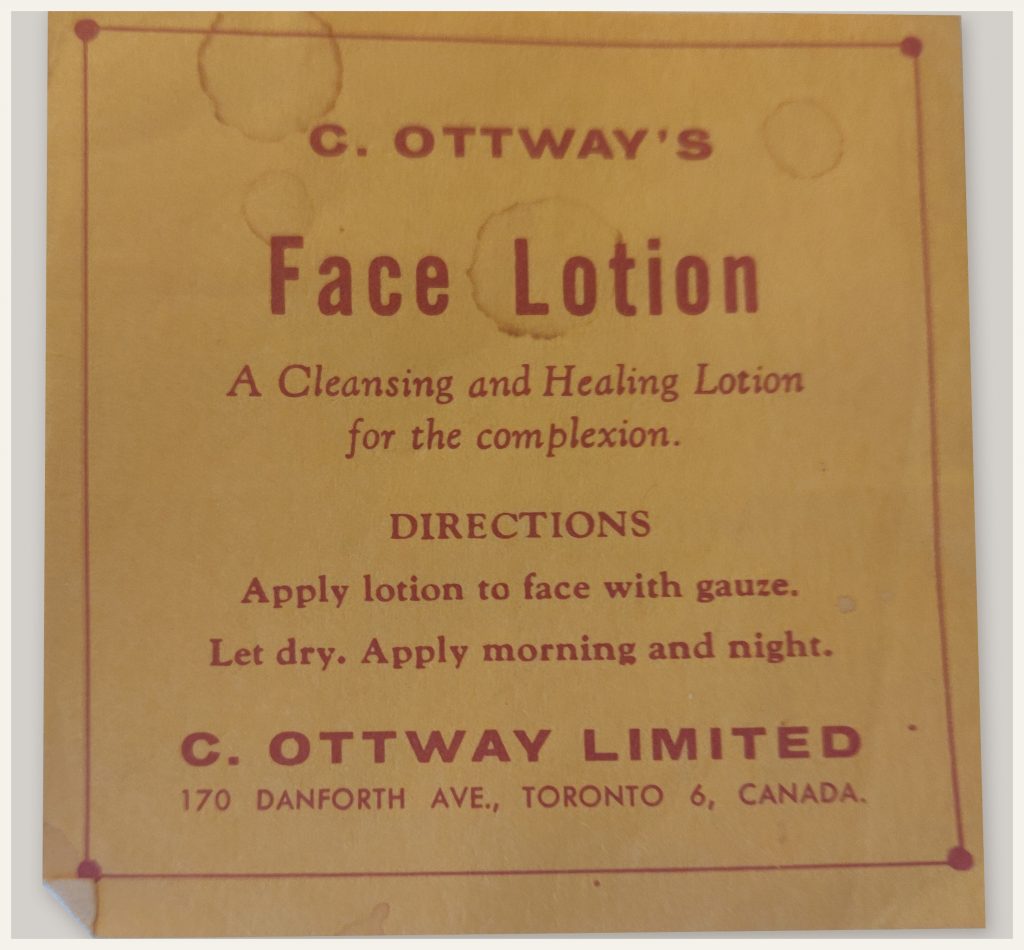
(Photos of these labels taken by Nick Faunus)
Mr Ottway became a popular and highly regarded Toronto character and was featured in the newspapers and on the radio. On one occasion he was taken to court for “illegally practicing medicine” but the public outcry against this was so great that the court summarily dismissed the charge, and he was never charged with anything again. Mr Ottway was also generous in his support of the poor and disadvantaged, giving free remedies and advice wherever it was needed.
Once, when he heard of a small boy suffering badly from boils, he offered to take care of him – and the boils cleared up in five days! After seeing the suffering that the poor boy went through, he vowed never to charge for the formula and gave it away freely to whomever needed it. The treatment consisted of only five capsules!
Along with Thuna’s (that’s another blog!) Ottways was the primary source for herbs in Toronto, up until the early eighties. Mr Ottway died peacefully in his sleep at 70 years but the products were still being made by his assistant Mathew Cameron, until he retired in the late eighties. The business has changed hands several times since then and still exists in a different location, but is still on Danforth Avenue. However, the unique products are gone and are no longer made there, although the store carries a wide selection of modern high quality products.
A personal note …
Mr Ottways story appeals to me for many personal reasons. I too arrived in Canada with nothing but my bag of herbs, and had to go out on the streets to sell them, in the early eighties, to live and eat. It was a struggle at first though always fun and fulfilling, but like Mr Ottway I never doubted the power of the herbs and my faith in them was rewarded many fold.
Most importantly I met my wife there in 1984 (she was working in the dispensary in the back). She heard me talking to the owner about some herbal products I was hoping to sell and caught me on the way out. She barely spoke but handed me a piece of paper, which I looked at when I arrived back at my rented room. It was her phone number, and we were married within a year! This year marks our 36th anniversary.
Isn’t it amazing what herbs can do for you!
We are always interested in learning more about Mr Ottway (and other past herbalists). If you have a story about him please get in touch with us here at hello@everythingherbal.ca!
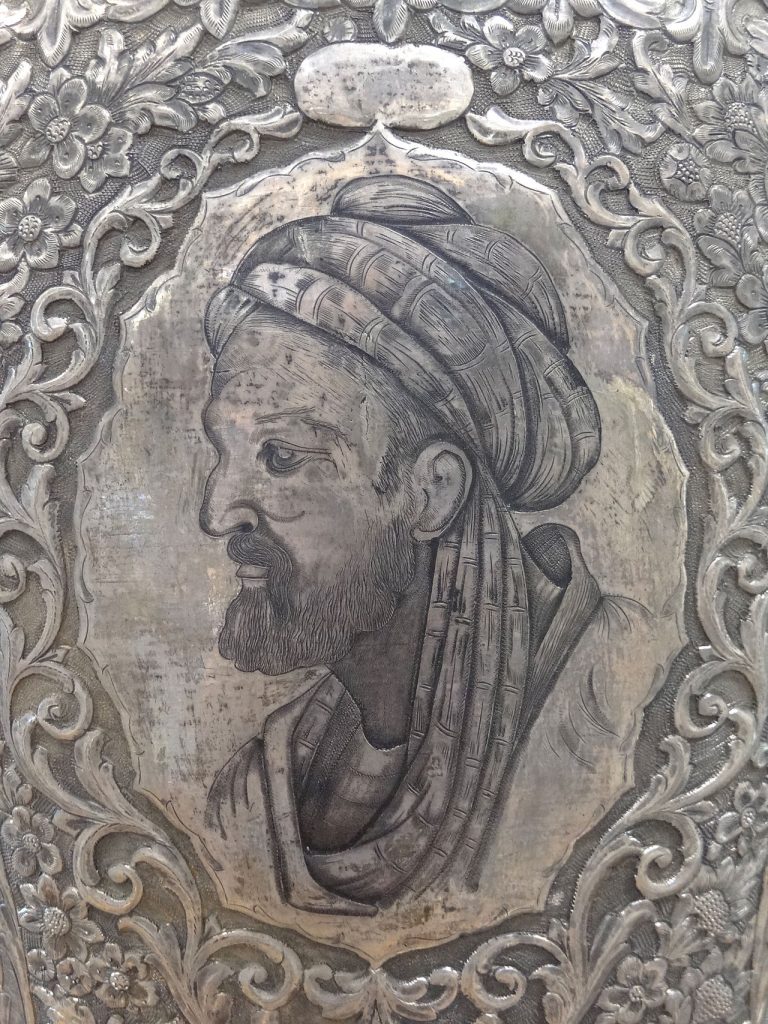
The Prince of Physicians
by Chalid Ottway.
In the region of Ibn Mansur, Amir of Bokhara, Arabia, in the year 980 A.D., in the town of Afshena, the first son of the Collector of Taxes was born. This boy, Abu, Ali Al-Husain lbn Abdallah lbn Sena, whom we shall call by his better known name, Avicenna, was destined to a career of undreamed of brilliance. He was to give to mankind new and superior methods for the prevention and treatment of disease that were to revolutionize the standard practices of his time, and to leave behind him the illustrious title. Prince of Physicians.
When Avicenna’s younger brother was born, his parents moved to Bokhara, which was then the chief city of the Moslem world, famous, even before its conquest by the Saracens, for its culture. Here, Avicenna was placed under a noted tutor, and soon proved himself a most precocious student. At the age of ten, he had not only mastered the Koran, but the Arabian Classics as well, and his tutor made no secret of the fact that the position of pupil and teacher was now reversed.
With an ambition that brooked no denial Avicenna continued to study medicine, astrology and kindred subjects, under the tutelage of the wandering scholars who, at that time, made their living by attending the sick and imparting their knowledge to the younger men. It was not long before Avicenna discovered that in most cases, his so-called teachers were nothing more than charlatans, or that his own learning was far in advance of theirs.
Aided only by the written works of others, he continued to study the higher branches of the Arts, and assiduously put into practice his medical knowledge. History records that he read “Metaphysics by Aristotle” forty times in an endeavour to fully understand this ponderous work, but in spite of this continual reading, its meaning remained hopelessly obscure, until for a few cents, he purchased a commentary written by Farribi. With this simple little aid, he obtained a complete mastery of the subject matter contained in Aristotle’s works.
At the age of sixteen, he had mastered medical theory and according to his own accounts, perfected his methods of treatment and preparation of remedies by continual attendance upon the sick without charge.
At the age of seventeen, he was appointed Chief Physician to the Amir, after having cured him of a dangerous illness that had baffled the noted doctors of the time, and was further rewarded by being given access at all times to the wonderful collection of books in the Royal Library.
A few years later, the Library was totally destroyed by fire. Avicenna’s enemies accused him of arson, saying that it was his intention to conceal for all time the sources of his marvelous powers and learning. This contention, however, was never proved.
All through the period in which Avicenna lived, his country was riven by feuds and war. In the year 1004 the Saminid Dynasty came to an end. Declining the offer of the position as physician to Mahmud the Ghasnivia, he began his wanderings from town to town in Khiva and Khorasan seeking an outlet or market for his talents.
During the siege of Darlem, in 1012, Avicenna suffered so from privation, that he was taken seriously ill. When he recovered, he sought the assistance of a friend and settled in Joryan, near the Caspian Sea. There, he lectured on logic, astronomy and medicine, and wrote several treatises, in addition to commencing his famous “Canon of Medicine”.
The constant feuds of those in power, forced Avicenna to travel west, and he stopped at Rai, in the vicinity of modern Teheran. Eventually he settled in Hamadan, where he continued his prolific writing, completing thirty more of his works, and his Canon of Medicine, comprising in itself five volumes, which were dictated and explained to his pupils day by day.
He was consulted by the Amir who afterwards appointed him to the office of Vizier. This appointment caused much jealousy, and roused Avicenna’s enemies to plot against his life. An order for his execution was signed by Shamus Addaula, and Avicenna was forced to hide in the cellar of a Sheik’s house for forty days, at which time a pardon was obtained by royal command in order that he might attend the Amir who was very ill.
War, prison and privation, coupled with the intense mental strain of overwork, punctuated by strenuous bouts of material pleasures, undermined Avicenna’s constitution and depleted his stamina.
During one of the ever recurrent campaigns, he was seized on the battlefield with a serious stomach trouble. He applied to himself remedies that were so strong that he had to return to the city. A similar seizure at a later date warned him that the disease was gaining ground. He resigned himself to his fate, realizing that his weakened system could not stand the arduous regimen necessary to check the disease.
With characteristic thoroughness he bestowed all his goods upon the poor, and freed his slaves. The latter part of his days was spent in listening to the reading of the Koran, from which he derived much comfort, and thus in the month of June, 1037, Avicenna passed from this world. But the works of this Prince of Physicians lived on, and became the guides to the medical study in the European Universities from the twelfth to the seventeenth century, and are again, in the writings that will come*, carrying on their task of enlightenment and mercy.
A Note on Pronunciation
It is felt that it is wise to give here a literal translation of Avicenna ‘s name, since the one with which we are familiar is in reality the English corruption of his Arabic nickname. It is well to keep in mind too, that each Arabic word has several meanings, so that a word may appear in its translated form at one time in one manner, and at another in different manner.
Abu Ali Al-Husain lbn Abdallah lbn Sena
Abu – Title of respect such as our Sir.
Ali – His father’s given name.
Al – Roughly translated, in this case means, of.
Husain – The Persian calling of the family name, which is in Arabic, Nesaif.
Ibn – In this case, means son.
Abdallah – Avicenna’s given name.
Ibn Sena – Son of Abyssinia, or coming from Abyssinia.
It was by this name that our Doctor and Philosopher was known, that he might be distinguished from others of the same family name, and it is from this nickname, Ibn Sena that the English corruption, Avicenna comes.
So, literally, we have Mr. Ali Al Husain’s son, Abdallah, who comes from Abyssinia.
*Note: I intend to feature extracts from Chalid Ottway’s writings in future blogs, including some of his wonderful formulas!
Talking About: Adaptogens
Adaptogens
What Are Adaptogens?
Often times, we have to just listen very closely to a client’s story and they will actually tell us the answer themselves. The same concept applies to the term “adaptogen” – listen closely “adaptogen” – “to adapt” – “adapting”… Looking at it from a broad view, this is what this group of herbs does. Adaptogens help us adapt to both environmental and psychological stresses.
It is said that 75% – 90% of all doctor visits in North America may have a stress-related component. Clearly, our bodies are sending us signals – these signals can include loss of interest, poor memory or feelings of worry and fear. Symptoms can also include (but are obviously not limited to) manifestations which we may not even relate to stress; like feelings of tension, fatigue or digestive issues.
If our body is unable to naturally recover from stress, there are two essential ways to support it in its ability to cope and recover. The first one is to address the initial stressors and find ways to limit the root cause. The second is to introduce the “super-heroes” of the herbal world – Adaptogens.
Any reputable herbalist will support clients in both ways. They will help find a herb that suits the individuals needs best, usually within a personalized formula, but will also share effective techniques to help cope with stress and exhaustions.
In summary, adaptogens:
- Increase resilience
- Increase physical performance
- Increase coordination, cognitive performance, memory and concentration
- Improve mental and physical activity and stamina
- Have a tonifying and immunomodulating effect
Getting a Hand on the Root Cause
Yes, adaptogens are amazing. They are the number one group of herbs to help us become more resilient to stressful situations and support our organism when suffering from stress related fatigue and other symptoms. However, when working with adaptogens, we have to keep in mind that they can certainly help us “adapt”, but also, adaptogens will only effectively work long term if we also address the root cause that has brought one to this state of physical and emotional exhaustion. Biological stressors, chemical stressors, consumable stressors, environmental stressors, psychological, physical, as well as spiritual stressors all have to be addressed. Trying to fix symptoms instead of addressing the root problem can be dangerous.
Apoptogenic Herbs
If you think adaptogens are what’s needed in your life, be sure to find the right one for YOU. Adaptogen isn’t always adaptogen. For example, if one lit their candle on both ends and as a result crash and are burned out, a relaxing adaptogen like Ashwagandha might not be the first choice. We might want to work with a more stimulating herb like Rhodiola. But even then, if the client’s constitution tends to be rather dry, Rhodiola might, in the long run, irritate even more. Therefore, in order to receive the best long lasting results, it is always advised to contact a professional herbalist to help find which adaptogen might work best.
Examples of Some Apoptogenic Herbs
Rhodiola rosea (Rodiola) – Stimulating
Can help with brain fog, increase concentration, memory as well as mental capacity. Has also been recognized to help with depression, particularly the “winter blues” (SAD).
Eleutherococcus senticosus (Eleuthero, Siberian Ginseng) – Stimulating
Eleuthero is helpful for those who can’t get out of bed, even after a full night of sleep. For those dragging through the day, foggy brain… Eleuthero supports a depleted immune system by promoting natural detoxification processes in the liver.
Withania somnifera (Ashwagandha) – Strengthening without stimulating, calming
Particularly helpful for individuals who seem depleted and “worn out”. Has been used to heighten intellectual capabilities and longevity, for those with insomnia, wired/cloudy thinking and fatigue. Ashwagandha has improved long and short-term memory in people with mild cognitive impairments and has successfully been used those with OCD and ADHD.
Schisandra chinensis (Schisandra) – calming
Schisandra creates a calm feeling while increasing focus and gently boosting physical energy levels. It has hepatoprotective properties, meaning that it is liver protecting and blood purifying. Schizandra is thought to enhance the endocrine system and nonspecific immune system function, which is the one most affected by stress.
Ocimum sanctum (Tulsi/ Holy basil) – relaxing
This calming and relaxing adaptogen has been successfully used to help manage stress, poor memory, anxiety and be of support when one feels irritable. Tulsi clears the Aura, gives the power of awareness and harmonizes. Tulsi may also be beneficial in cognitive disorders such as Alzheimer’s disease and dementia.
I hope this post gave you a little insight on adaptogenic herbs and how they can interact with our body. This topic is covered much more in depth in the herbal course, which is currently developed and coming soon by our group of wonderful herbalists.
Resources:
Besides my own words and oral teachings from many wonderful herbalists, this write up features’ information from the following resources:
Ursel Buehring Praxis- Lehrbuch Heilpflanzenkunde – Grundlagen – Anwendung – Therapie. 4 ueberarbeitete Auflage. Karl F. Haug Verlag in MVS Medizinverlage Stuttgart GmbH & Co. KG’ 70469 Stuttgart, Germany. 2014. (Published in German language)
Jim McDonald – Foundational Herbcraft – www.herbcradft.org – collected writings from www.PlantHealkerMagazine.com.
Abrah Arneson – The Herbal Apprentice: Plant Medicine and the Human Being – Green Heart Press. 2014.
Paula Grainger – Adaptogens, Harness the power of superherbs to reduce stress & restore calm – Octopus Publishing Group Ltd. 2018
Adriana Ayales – ADAPTOGENS, Herbs for Longevity and Everyday Wellness – Sterling Publishing Co., Inc., New York. 2019
https://www.webmd.com/balance/stress-management/stress-and-the-body
Herbal Actions: Aromatics
Herbal Actions
What is a “herbal action”?
When we speak about the action(s) of a certain plant, we are referring to one or more effects a plant can have on our body. Often these actions are explained in two or three words; however, herbal actions are so much more than that! Since plants are wonderful complex beings, they also have several actions. Most herbs can compliment their action(s) in combination with another herb, basically showing off their best side with the support of a “good friend”. Sometimes they work great on their own, but most of the times, they excel with a good buddy on their side. Think- Teamwork!
Aromatics
Imagine walking through your garden, on your favorite trail, or through the quiet woods. Try to picture this beautiful abundance of growth using your senses. Can you see all the different colors, hear the leaves dancing in the light breeze, feel their softness or even their sharp thorns on your skin? Can you smell the plant? No? Try crushing a leaf… How about now? Can you give it a little taste test? Mild? Bitter? Pungent maybe?
If you have been learning from and with our wonderful plant friends, chances are, you have come across the term/action, “aromatic”. Now let’s get back to our imaginary herb walk from just moments ago. It was right there were you have come across a “sense-able”, or “foundational” (as Herbalist Jim McDonald calls it) action of an herb. An action you can immediately experience using your senses.
When talking about aromatic herbs, we refer to herbs one can easily smell by releasing their oils (referred to as volatile oils or essential oils) from their special secretory structures, such as oil cells, epidermal hairs or resin ducts. Most of the time, this release of oils happens, when the leaves or other plant parts have been crushed.
Did you ever ask yourself why a plant even has all these essential oils and/ or amazing actions? They actually have a variety of natural functions within themselves and act for example as growth regulators, protection from heat or cold or serve, for interplant communication or to attract pollinators.
Before giving you a little glimpse on how aromatic herbs can support our body, please let me clarify that I am writing about aromatics and the action of essential oils within the whole plant, and not the distilled, isolated essential oils (EO) you can buy in little brown bottles. Due to the isolated EO’s high potency, they act very different on the body and should be only used with care and the support of a trained aromatherapist.
Examples of some Aromatic Herbs
Lovely herbs for the respiratory system include Angelica archangelica (Angelica) or Thymus vulgaris (Thyme). With both of them being expectorant, anti-microbial and anti-spasmodic, the volatile oils in the plant help liquify the mucous in the bronchi and transport it upwards via a productive cough.
Lavendula (Lavender) is a wonderful relaxing nervine. Coffee spp. (Coffee- anyone?) on the other hand, is a fabulous stimulating nervine (please note, coffee will only excel if used in moderate doses and if you rule the coffee, not the coffee rules you…) – you got it, both aromatics can be used to address the nervous system.
Often aromatics are referred to as carminatives. I personally see the term carminative as a sub-category to aromatics, specifically in regards to the digestive system. Aromatics/ carminatives are of great help when, for example, fermentation in the stomach becomes a problem. My favorite herbs for the digestive tract include Zingiber officinale (Ginger), Foeniculum vulgare (Fennel) or Matriacria recutita (German Chamomile)
I hope this post gave you a little insight on aromatic herbs and how they can interact with our body. This topic is covered much more in depth in the herbal course, which is currently developed and coming soon by our group of wonderful herbalists.
Resources:
Besides my own words, this write up features information from the following resources:
– Ursel Buehring Praxis- Lehrbuch Heilpflanzenkunde – Grundlagen – Anwendung – Therapie. 4 ueberarbeitete Auflage. Karl F. Haug Verlag in MVS Medizinverlage Stuttgart GmbH & Co. KG’ 70469 Stuttgart, Germany. 2014. (Published in German language) Jim McDonald – Foundational Herbcraft – www.herbcradft.org – collected writings from www.PlantHealkerMagazine.com.
– David Hoffmann – Medicinal Herbalism: The science and practice of herbal medicine. Healing Art Press, Rochester, Vermont 05767. 2003.
– Abrah Arneson – The Herbal Apprentice: Plant Medicine and the Human Being – Green Heart Press. 2014.
– Matthew Wood – The practice of Traditional Western Herbalism – Basic Doctrine, Energetics and Classification – North Atlantic Books, Berkley, California. 2004
Talking About Maple Syrup
Spring is on it's way...
My first experience with making maple syrup by myself was for my son’s science fair project on evaporation. That was over 25 years ago! I had as much fun as the boys. First, we tapped a couple of old sugar maples. Then waited anxiously for the sap to flow. When it was time to begin our experiment, we evaporated just enough sap to make syrup and then continued the evaporation process till we make Maple Candy, such a yummy experiment!
Believe it or not, but I personally go through a 4L jug of syrup per year! We LOVE it!
When is maple syrup tapping and harvesting season?
Maple sugar season in Ontario normally starts in the late winter and ends in the early spring. The sugar maple’s sap starts to flow after a hard freeze. The best time for maple sap collection is when nights are freezing cold and are followed by sunny and rather warm days that are between 40 and 50 degrees Fahrenheit. On days when these conditions are not reached, the flow of sap will be slow. When optimum conditions are reached, the sap will flow quickly, on these days, we should check often so that the buckets don’t run over! The entire sap collection season only lasts from three to four weeks. When the temperature remains above freezing, or when the maple trees begin to form buds, it’s time to stop collecting sap from the trees. If maple syrup is made from sap collected once buds have begun to form on the maple trees, the syrup will smell bad and have a poor flavor.
How long does maple syrup last?
Maple syrup never spoils! This is due to the high concentration of sugar in maple syrup. Maple syrup should be kept in the refrigerator once it’s opened to discourage mold from growing on the syrup. Should mold grow on maple syrup, it’s safe and easy to remove. Just scoop the mold off the top of the syrup with a spoon and discard the mold or strain the maple syrup into a clean container through a piece of cheesecloth. Maple syrup kept in a cold place such as a refrigerator is less likely to grow mold than maple syrup kept in a cupboard or other warm place.
How do you know when the maple syrup is done?
We have chosen to use a very simple method, the spoon test. Dip a spoon into the boiling sap and watch the sap drip back into the pan. If the sap still needs to boil more, the sap will fall off the spoon in separate droplets. When the syrup starts to run off the spoon in a sheet or a stream, then it’s almost done. It will also start to look more like syrup and less like sap at this point. If you think the syrup is done, take it off the fire and let it cool a bit. As it cools it should start to thicken if it has turned into syrup. If the syrup is still not thick enough it can be returned to the heat and boiled some more.
Which maple tree do you get syrup from?
There are three different species of maple that produce the kind of sap from which maple syrup is usually made, Sugar Maple (Acer saccharum), the Black Maple (Acer nigrum), and the Red Maple (Acer rubrum). These three species of maple have very high sugar contents in their sap. Red Maples offer a shorter sugar season because they tend to bud earlier than either Sugar or Black Maples. You can also tap the Manitoba Maple (Acer negrundo), the Silver Maple (Acer sacharinum), and the Bigleaf Maple (Acer macrophyllum). Birch and Black Walnut trees can be tapped for syrup. Next year I am going to try Black Walnut just for fun!
Does maple syrup have potassium in it?
One tablespoon of maple syrup contains 42 mg of potassium. Not only does maple syrup contain potassium, but it also contains calcium, zinc, manganese, magnesium, and iron. The darker the maple syrup, the more of these minerals it contains. Maple syrup also contains trace amounts of vitamins B1, B2, B5, B6, biotin and folic acid.
A Herbal Apprentice's Journey: The Beginning
February, 2021
Hi! I am Dayna, and I'm going to apprentice under herbalists Penelope Beaudrow and Nick Faunus beginning this year.
I've spent most of my life as an artist and performer. A life wrapped in musical connection and exploring meaning in shapes, words, and colours. I have cultivated so much joy in playing early jazz & blues and old-time fiddle music. For years, I have sung through worlds. Always touring, exploring and moving. For nearly 8 months, I have been nested on Vancouver Island. An attempt described best by what I have called, "The COVID Mess-around". Though I wade through many fleeting feelings, there is immense comfort in my surroundings here. The west coast has thighs of dense soil. She reaches up with mountains, whose every contour is caressed by sunlight. It's most humbling to be in her presence. I recognize that my human existence is a wink in the eyes of the great beings that coexist with us. Plants, minerals, and elemental forces that turn giant, galactic pages for us. I am reminded that I am quite humbly temporary, and that I may never learn all the secrets of the wind or mosses.

Spring arrives earlier here than I expect it to, having been raised in Ontario. Sunlight poured in the windows one morning when I emailed Penelope Beaudrow to inquire about the herbal apprenticeship she offers. I'd been walking a lot. The buds of trees, swelling in the wet air had prompted me, telling me that soon waves of sun would wash over us. That soon, the days would stretch out and the nights would curl in at the edges. That soon, yes, we would dig in soil and begin another year of tending to tender lives.
I'd first met Penelope Beaudrow and Nick Faunus through my mother's own affinity for herbal medicine. I took to it, and skipped along to herb walks, and volunteered at the Back To Your Roots herbal retreat at Penny's farm. I am looking forward following them as my mentors. This apprenticeship has been something I have dreamt of for years. Within herbal medicine lies the opportunity to gather community resilience and autonomy over our own wellness. There is magic, and oh so much empowerment in allowing each other to understand our own bodies better through self-healing. The service of herbal medicine is akin to the soul-nourishing enjoyment of poetry, music, and potlucks. It is part of a connected web of what it means to be alive and supporting one another's growth! I sometimes have a hard time integrating institutionalized medicine into my understanding of human wellness. I have a goal within my apprenticeship to keep in mind that health is liberating, and to continually find ways to share my knowledge and resources. I see both Penny and Nick prioritize these same values, for which I am so grateful.
We had an interview on Zoom, which I have suddenly become much more comfortable with in the last year. Greeting one another in a digital space to ask questions and confirm that we all felt we were on the same page. I felt eager to share my commitment. It was a delightful morning, after which my roommates celebrated with me, and I spent time on the phone with my mother and partner to share in jubilant conversation.
Soon I will leave Vancouver Island to head east. Into the snow and away from the clouds of chlorophyll forests quenched with walls of rain. Cherished memories of this life here that I will return to again. Into the expanding walls of my comfort zone, and the lakes and rolling hills of Ontario that I unwaveringly long for when I am away. My car will be packed with my few belongings, which feel to me like to many things for a traveler that lives out of her suitcase most of the time. A car filled with books, paintings, my banjo and fiddle. Until that moment,, enjoying a slow community house life in Victoria. Afternoons of piano concerts and big pots of soup, poetry readings and sharing tea. I look forward to coming back to this blog space in the months to come to continue reflecting on the unravelling of my apprentice journey.
